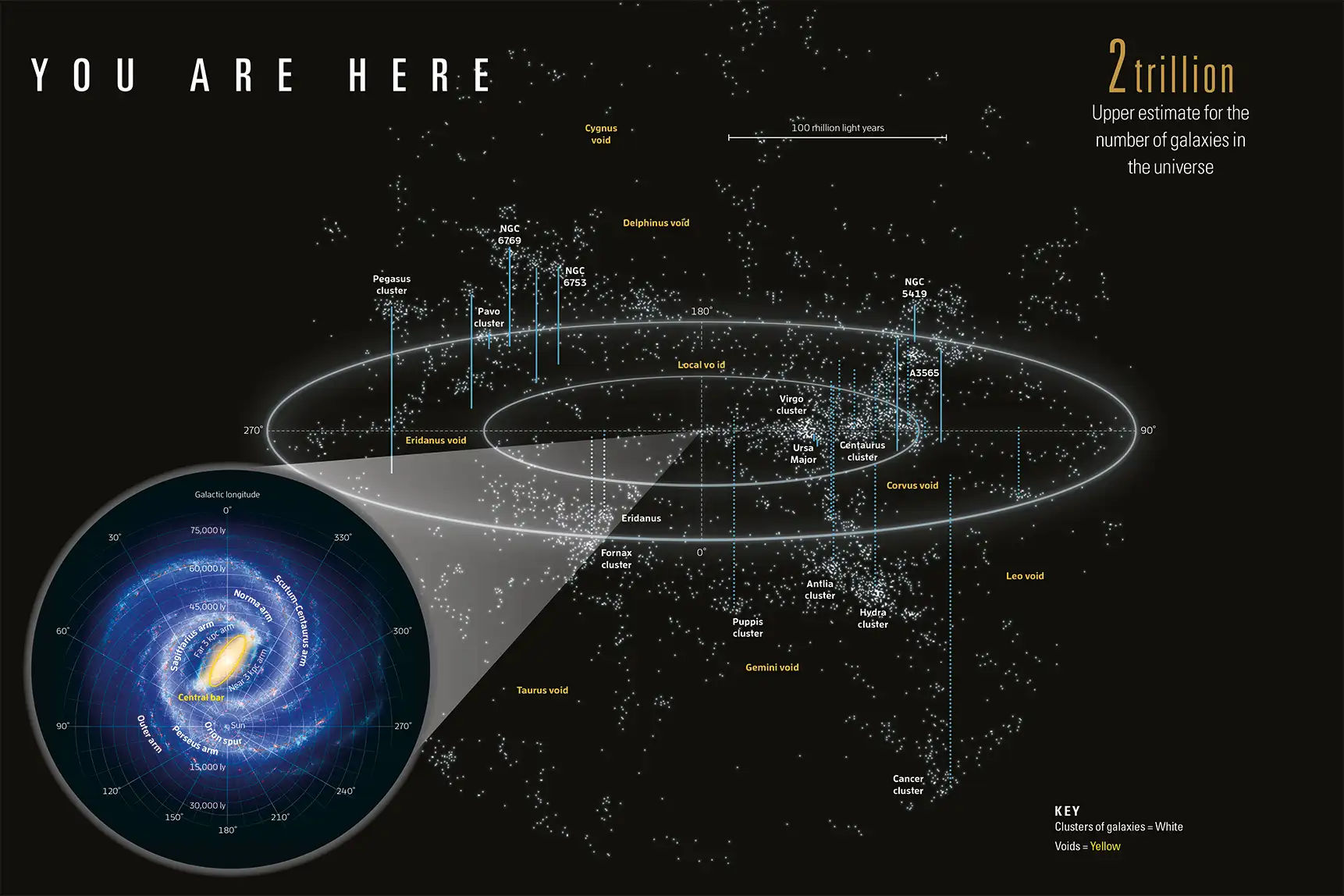If you know how to look, you can see amazing things, far vaster and more impressive than anything imagined by our ancient ancestors. But you have to know how, and be willing to.
This is an image from an article in the magazine New Scientist, which I don’t subscribe to and so can only read the opening of; discovered via Google News.
New Scientist, 26 Jun 2024: This mind-blowing map shows Earth’s position within the vast universe, subtitled “See the circle of galaxy clusters and voids that surround us in this map of the nearby cosmos, extending 200 million light years in each direction”
This map shows the circle of the cosmos that surrounds us, extending to a distance of 200 million light years. At this scale, space is comprised of clusters of galaxies and voids, the latter being areas with relatively few galaxies. The Milky Way, at the centre, is part of the Local Group of galaxies, with the Virgo cluster our nearest neighbour.
Majestic spiral
The Milky Way’s spiral structure is dominated by two main arms called Scutum-Centaurus and Perseus. It also features a dense region known as the central bar. Our solar system lies on a more modest structure called the Orion spur.
However tangled the question of our metaphorical place in the universe, we can use astronomy to grasp Earth’s physical location.
Earth orbits the sun at a distance of 150 million kilometres and the sun orbits the centre of the Milky Way. Specifically, we are in the Orion arm, around 26,500 light years from the centre.
The Milky Way resides in the Local Group of galaxies. About 2.5 million light years away is our closest neighbouring galaxy, Andromeda, the largest galaxy in the Local Group. Right now, we are hurtling towards Andromeda at more than 100 kilometres per second; in about 4 billion years, the two galaxies will collide.
And so on. That’s as much of the article as I can see, without subscribing. I did manage to save the image from the article and remove with width constraint to save the entire image. Click for full-sized, above.
The paradox of humanity is that we have the potential to be extremely clever. We’ve learned how deduce conclusions from evidence, rather than relying on traditional myths, at least all the way back to Eratosthenes and his deduction that the world is round. The paradox is that humans don’t actually need that knowledge to survive; and so many people deny anything that does not align with basic intuition. Thus, I suspect, there are more flat-earthers in the world, than astrophysicsts and astronomers. But it’s only the latter, and their like, who are improving the lot of humanity. The rest of them just maintain the existence of humanity, with the tiny minority able to comprehend vaster things a sort of consolation prize.






